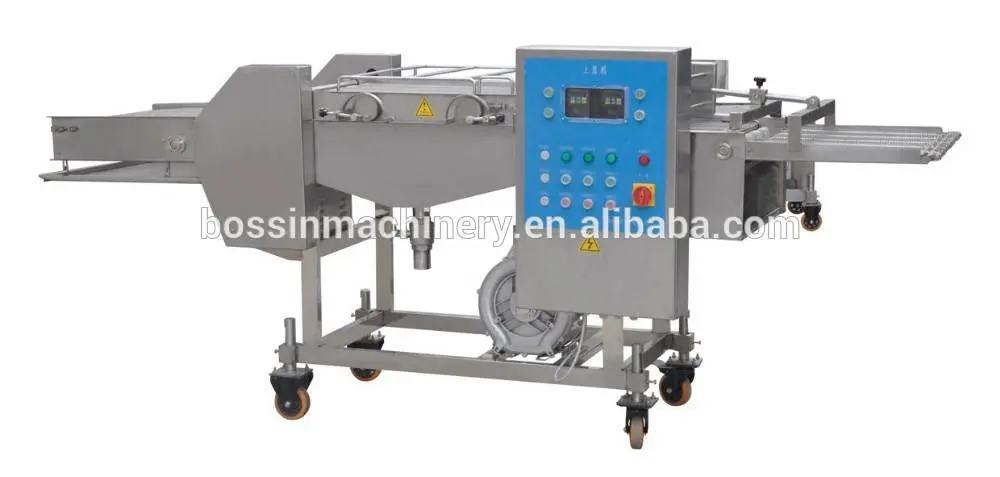
okt . 11, 2024 08:08 Back to list
vacuum filler parts manufacturer
Understanding Vacuum Filler Parts Manufacturing
In the world of food processing and packaging, efficient machines play a pivotal role in ensuring that products meet quality standards while maximizing productivity. One such essential machine is the vacuum filler, which is primarily used for filling sausages, meat products, and other food items into casings. The performance and reliability of vacuum fillers heavily depend on the quality of their components. This brings us to the significance of vacuum filler parts manufacturers, who specialize in producing the various components required for these machines.
The Role of Vacuum Fillers
Before delving into the specifics of vacuum filler parts manufacturing, it’s crucial to understand the function of vacuum fillers. A vacuum filler is designed to remove air from the filling process, thereby enhancing the quality and shelf life of the products while also ensuring hygiene. The machine works by creating a vacuum environment that fills the casings with the desired material, reducing the risk of air pockets that can lead to spoilage or uneven texture in products like sausages.
Components of Vacuum Fillers
A vacuum filler comprises multiple parts and components, each playing a unique role in the overall functionality of the machine. The primary components include
1. Hopper This is where the raw material is loaded. It needs to be durable and capable of sustained usage without degrading. 2. Piston The core of the vacuum filling process, the piston compresses the meat or filling material and pushes it into the casing. It must be manufactured from high-quality materials to withstand constant pressure without failure.
3. Cylinder Enclosing the piston, the cylinder must ensure that the vacuum is maintained during the filling process.
4. Vacuum Pump A critical component that removes the air from the filling chamber. Its efficiency directly affects the performance of the vacuum filler.
5. Nozzle The component through which the filling is injected into the casing. Different designs can be used depending on the desired end product.
6. Control Panel Allows operators to manage the machine’s settings, including the speed and pressure of filling.
vacuum filler parts manufacturer

Each of these parts requires precision engineering and expertise to ensure that the vacuum filler operates smoothly and efficiently.
Challenges in Manufacturing Vacuum Filler Parts
Manufacturing parts for vacuum fillers comes with its unique set of challenges. Precision is paramount since even the slightest deviation in the dimensions can lead to inefficiencies and product wastage. For manufacturers, this means investing in advanced technologies and equipment capable of producing high-precision components.
Moreover, materials used in these parts must meet specific food safety standards. This adds another layer of complexity to the manufacturing process. For instance, stainless steel is a preferred material due to its resistance to corrosion, ease of cleaning, and ability to maintain hygiene standards.
The Importance of Quality Control
For vacuum filler parts manufacturers, implementing rigorous quality control measures is essential. Each component must undergo thorough testing to ensure it meets the specifications required for successful operation in the food processing industry. This could involve stress testing materials, confirming the precision of dimensions, and ensuring that all parts function seamlessly together.
Innovations in Vacuum Filler Parts Manufacturing
As advancements in technology continue to shape the manufacturing landscape, vacuum filler parts manufacturers are also embracing new techniques. The integration of automation and robotics in production lines enhances efficiency and consistency. Additionally, strategies such as 3D printing are being explored for producing complex parts, which can significantly reduce lead times and costs.
Another trend is the increasing focus on sustainability. Manufacturers are beginning to look into eco-friendly materials and processes, aiming to reduce their environmental footprint while meeting industry standards.
Conclusion
Vacuum filler parts manufacturing is an integral component of the food processing industry, ensuring that machines operate efficiently and produce high-quality products. For this sector to thrive, manufacturers must prioritize precision, material quality, and innovation while adhering to stringent food safety regulations. As technology continues to advance, the future of vacuum filler parts manufacturing is poised for exciting developments that promise improved efficiency, sustainability, and product quality in the food industry.
Latest news
-
Pneumatic Clipping Machine - Shijiazhuang Bossin Machinery | Precision Cutting, Compact Design
NewsAug.09,2025
-
Pneumatic Clipping Machine-Shijiazhuang Bossin Machinery|Automated Clipping&Pneumatic Sausage Filling
NewsAug.09,2025
-
Pneumatic Clipping Machine-SHJZ Bossin Machinery|Precision Efficiency&Automated Clipping
NewsAug.09,2025
-
High-Speed Sausage Filler-Linker-Hanger Line | Automated Efficiency
NewsAug.09,2025
-
Pneumatic Clipping Machine - Shijiazhuang Bossin Machinery | Sausage Production Line, Efficiency
NewsAug.09,2025
-
Pneumatic Clipping Machine - Shijiazhuang Bossin Machinery | Sausage Production Line, Automated Meat Processing
NewsAug.08,2025